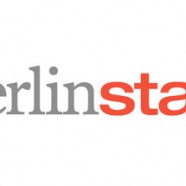Fab.com
hmm, it’s easy.
Fab.com Is To Facebook What Groupon Is To MySpace
Start it up this way:
The Fashion Shop sale with Pocket Square Clothing offered fab the perfect opportunity to delve into the finer points of men’s fashion and they love to tell us about the proper way to be a dandy.
So, Goldberg and Shellhammer reached an impasse. Their one-year old gay social networking site, Fabulis, was losing steam. The site had attracted in its first three months.
The market had shifted, and made ‘gay’ more mainstream.
Aha, ‘de-ghettoization’ of gay people worked against fab.
Gay hook-up sites were still popular, but the gay community had lost interest in having a social network of their own. Facebook was their gay social network.
Goldberg had bootstrapped Fabulis with $500,000 of his own money. He and Shellhammer had raised another $1.8 million from angels and venture firms First Round Capital and Menlo Ventures with the expectation their site would grow into a $100 million enterprise.
Their one silver lining: A flash sale feature they added to the site, a Gay Deal of The Day had achieved a glimmering of success. Shellhammer, who previously worked at Design Within Reach and , curated Fabulis products himself. Just 20 days after launch, the site had sold over $40,000 worth of product—over half of that to straight buyers.
It was a wake-up call. The two decided to strip their business of its sexual orientation and reincarnate as a flash deal site for selective design products.
The next day, the two threw out tens of thousands of lines of code and shut down Fabulis for good. Over the next three months, they hunkered down on their new concept. The start-up launched in conjunction with the news that it had raised $8 million in more capital from its existing VC backers plus Baroda Ventures, The Washington Post Company, Jeff Clavier’s SoftTech VC, Ron Conway’s SV Angel, Ashton Kutcher and Kevin Rose.
Three short months later, the start-up is already profitable with 600,000 members and six-figure sales days. The site sells everything from vintage typewriters to grenade-shaped soaps, up to a 70% discount.
What makes Fab.com’s rise so compelling is not just its origins, but its timing. The site has exploded at precisely the time the daily deals model has started teetering on the precipice. Last month, Groupon lost 50% of its traffic, laid-off workers in China and got socked with two class action suits. Groupon merchants—overwhelmed and unprepared for the sudden influx of bargain hunters—lost cash and their reputations too, as angry coupon redeemers took to Yelp to air grievances about poor service. Facebook and Yelp, which had both experimented with daily deals, announced they were pulling out of the space altogether.
Over that same period, Fab.com added over 5,000 new members a day and enticed suppliers with a “win-win” business model that guaranteed suppliers make a profit, even as their customers earned up to a 70% discount. Unlike Groupon and Living Social— which require merchants to significantly discount their offerings then take a hefty 50% cut of their own— Fab.com’s model ensures its suppliers don’t lose a dime.
The site’s buyers negotiate a price with suppliers up front–often near wholesale– that still guarantees a profit. Fab.com then independently sets its own pricing. The start-up does not disclose its margins.
To eliminate inventory risk, Fab.com does not buy any product until a sale has been completed online. And to keep customers from getting fatigued, Fab.com’s 10 buyers scour the world for products that fit the site’s unique aesthetic. A close look at the site reveals an interesting mix of Eames Lounge Chairs, signed Milton Glaser posters and, even, brightly-colored toilet paper.
The site has started to see more inbound requests from designers looking for additional sales and marketing channels. In many cases, Fab.com designers do not have high-traffic web channels or retail stores of their own.
One of Fab’s biggest hits was San Francisco-based designer Joey Roth’s unusual ceramic computer speakers. Roth sells his products at four retail locations and maintains a website of his own. Even so, when he sold his speakers through Fab.com last June, he hit daily sales in excess of $10,000. “That is typically what I might make in December,” says Roth, who notes that, on average, his products garner between $2,000 and $3,000 in sales a day. As a result of his partnership with Fab.com, Roth added 152 Twitter followers (among them, actor-cum-Fab.com investor Ashton Kutcher). Roth recognized the names of many of those ordering his goods off the site. Hardly bargain hunters, Roth says, “I noticed they were the founders of some of the most forward-looking design agencies, heads of major record labels and musicians.”
Fab’s founders say their biggest challenge is driving virality. The site coaxes members into inviting friends with perks like one-time discounts and free shipping. Over half the site’s members have now joined the site via a friend’s invite. But to generate further buzz, Fab is also unveiling the “world’s first online pop-up shop” today. For the next month, the shop will feature designs from some of the nation’s top designers (as crowned by the editors over at Fast Company).
As Fab grows, its biggest competitors may be online luxury flash e-tailers Gilt Groupe and OneKingsLane. Goldberg and Shellhammer share an investor with the latter in First Round Capital. (The two claim OneKingsLane is not a competitor but “our more traditional, private-school, sister.”) Even so, Gilt Groupe is a formidable enough competitor on its own . In a mega-funding round last May, Gilt was valued at a billion dollars. The site is widely expected to go public sometime next year.
Fab’s founders sound undeterred, anyway. “Our margins are much higher than a fashion site and we don’t deal with seasonality or liquidation,” says Goldberg. “A lot of people are going to turn around six months from now and see we are the fastest growing business in the space, period.”







Gostei muito desse site!
thx…http://www.facebook.com/Berlinstartup